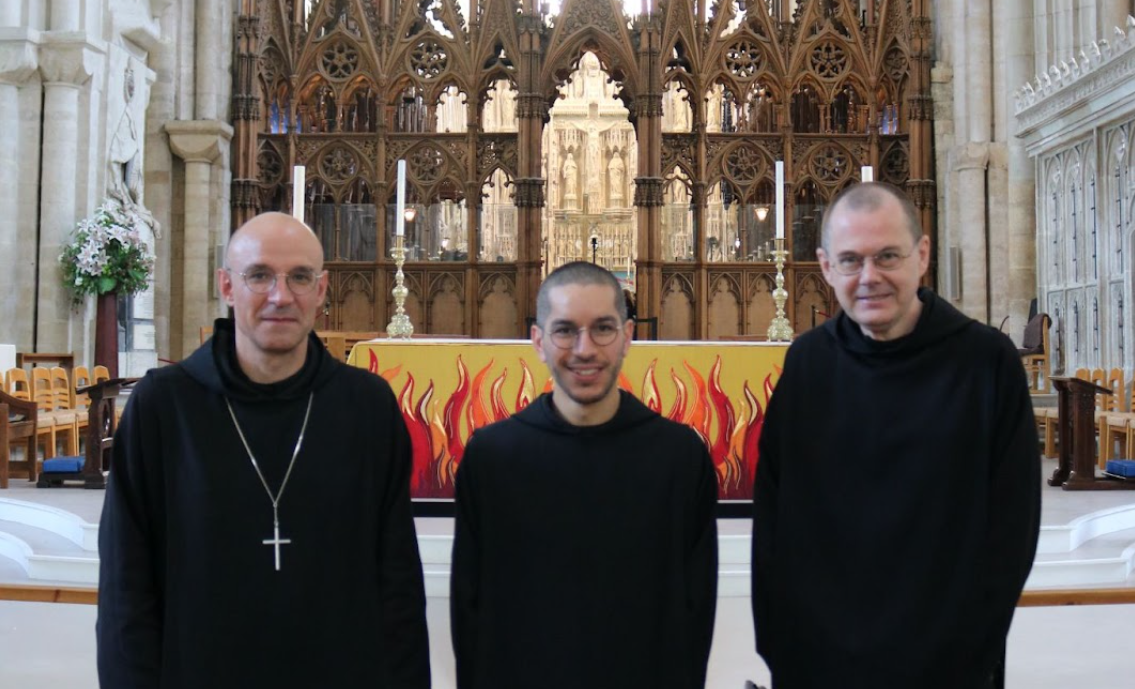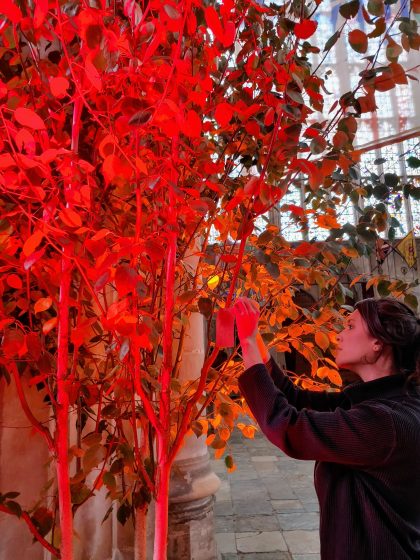Between 3 July and 5 July, the Abbot and two monks, Br Thomas and Br Theophan, from Fleury Abbey in France visited Winchester. The visit was the fruit of the longstanding partnership between the community of the Abbey de Fleury and Winchester Cathedral, a relationship that has endured for an astonishing thousand years.
On their visit, the group took a guided tour of the Cathedral, including the Fleury building which was built in 2011. As the name suggests, this building commemorates the historical relationship between Abbey de Fleury and Winchester Cathedral. It was opened by the Abbot of Fleury at the time, Dom Étienne Ricaud who was then also installed as the first Honorary Ecumenical Canon of the Cathedral.
The Abbot and monks took particular interest in visiting the Kings and Scribes exhibition, where they delved into the world of ancient manuscripts and royal archives, as well as being the guests of honour at the Pilgrims’ School Junior Concert. The group also enjoyed a tour of the Hospital of St Cross.
A visit from the new Abbot of Fleury Abbey, Fr Matthieu and his two brothers is a very special event in the life of Winchester Cathedral. Although Cathedral life is different to the life of a monastery, we share so much in common. We are united in Christian faith and in our foundation in the Rule of St Benedict and its emphasis on stability, transformation and balance. The visit of the Fleury monks was a great blessing.
The Very Reverend Catherine Ogle, Dean of Winchester
A Centuries-Long Relationship
Winchester Cathedral’s link with the Abbey of Fleury, on the banks of the Loire, is one with ancient origins.
Fleury Abbey in St-Benoit-sur-Loire was founded in about 640 and is one of the most celebrated Benedictine monasteries of Western Europe, possessing the relics of St Benedict of Nursia, the founder of Western monasticism. In the tenth century, Fleury enjoyed a golden age and was part of the movement to return to the simpler monastic life that St Benedict preached.
It was just before this golden age of European monasticism that monasticism in England was in decline, a decline that Alfred the Great (871 – 899) and later kings sought to reverse. Dunstan, Archbishop of Canterbury under King Edward, appointed Aethelwold, the prior of Abingdon Abbey to be Bishop of Winchester (963 to 984). In Aethelwold the king found a zeal for church building, for the reformation of manners and for learning.
Aethelwold found Winchester Cathedral to be in a poor state, both in its fabric, and in its worship. In his reformation efforts, he first reformed the Cathedral body by requiring that all the cathedral clergy should be celibate monks and conform to the Benedictine Rule. Only three consented, however, so the others were dismissed. They were replaced with monks from Abingdon, who had earlier come to England, from Fleury. So, a thousand years ago, the great French Abbey was a source of renewed and reformed Benedictine practice at Winchester Cathedral.
Winchester was then at the centre of reform in England. Scholars were brought from Fleury to help draw up a new Benedictine Rule, which enabled monastic life at Winchester to flourish until St Swithun’s Priory (as Winchester Cathedral was then called) was dissolved under Henry VIII.
It was a previous Dean of Winchester, Michael Stancliffe, who renewed the ancient relationship in 1978, when he and the then Abbot of Fleury agreed that the two foundations should be united in prayer. They have been praying for each other every day since then.



